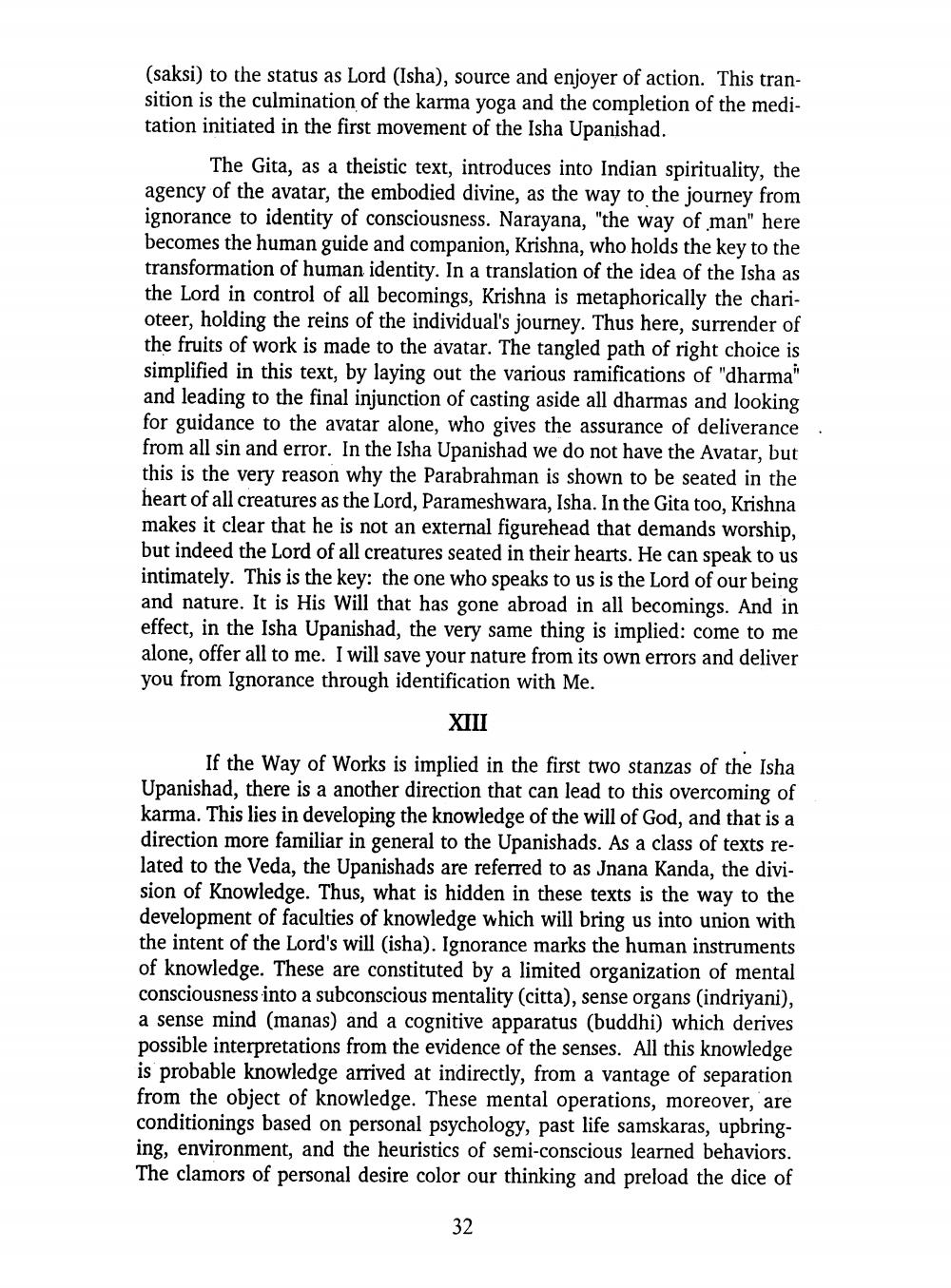________________
(saksi) to the status as Lord (Isha), source and enjoyer of action. This transition is the culmination of the karma yoga and the completion of the meditation initiated in the first movement of the Isha Upanishad.
The Gita, as a theistic text, introduces into Indian spirituality, the agency of the avatar, the embodied divine, as the way to the journey from ignorance to identity of consciousness. Narayana, "the way of man" here becomes the human guide and companion, Krishna, who holds the key to the transformation of human identity. In a translation of the idea of the Isha as the Lord in control of all becomings, Krishna is metaphorically the charioteer, holding the reins of the individual's journey. Thus here, surrender of the fruits of work is made to the avatar. The tangled path of right choice is simplified in this text, by laying out the various ramifications of "dharma and leading to the final injunction of casting aside all dharmas and looking for guidance to the avatar alone, who gives the assurance of deliverance. from all sin and error. In the Isha Upanishad we do not have the Avatar, but this is the very reason why the Parabrahman is shown to be seated in the heart of all creatures as the Lord, Parameshwara, Isha. In the Gita too, Krishna makes it clear that he is not an external figurehead that demands worship, but indeed the Lord of all creatures seated in their hearts. He can speak to us intimately. This is the key: the one who speaks to us is the Lord of our being and nature. It is His Will that has gone abroad in all becomings. And in effect, in the Isha Upanishad, the very same thing is implied: come to me alone, offer all to me. I will save your nature from its own errors and deliver you from Ignorance through identification with Me.
XIII
If the Way of Works is implied in the first two stanzas of the Isha Upanishad, there is a another direction that can lead to this overcoming of karma. This lies in developing the knowledge of the will of God, and that is a direction more familiar in general to the Upanishads. As a class of texts related to the Veda, the Upanishads are referred to as Jnana Kanda, the division of Knowledge. Thus, what is hidden in these texts is the way to the development of faculties of knowledge which will bring us into union with the intent of the Lord's will (isha). Ignorance marks the human instruments of knowledge. These are constituted by a limited organization of mental consciousness into a subconscious mentality (citta), sense organs (indriyani), a sense mind (manas) and a cognitive apparatus (buddhi) which derives possible interpretations from the evidence of the senses. All this knowledge is probable knowledge arrived at indirectly, from a vantage of separation from the object of knowledge. These mental operations, moreover, are conditionings based on personal psychology, past life samskaras, upbringing, environment, and the heuristics of semi-conscious learned behaviors. The clamors of personal desire color our thinking and preload the dice of
32




